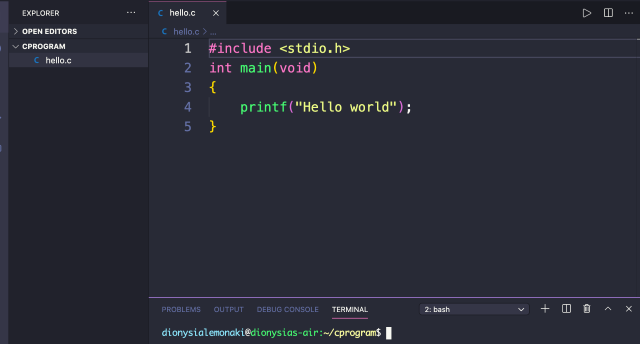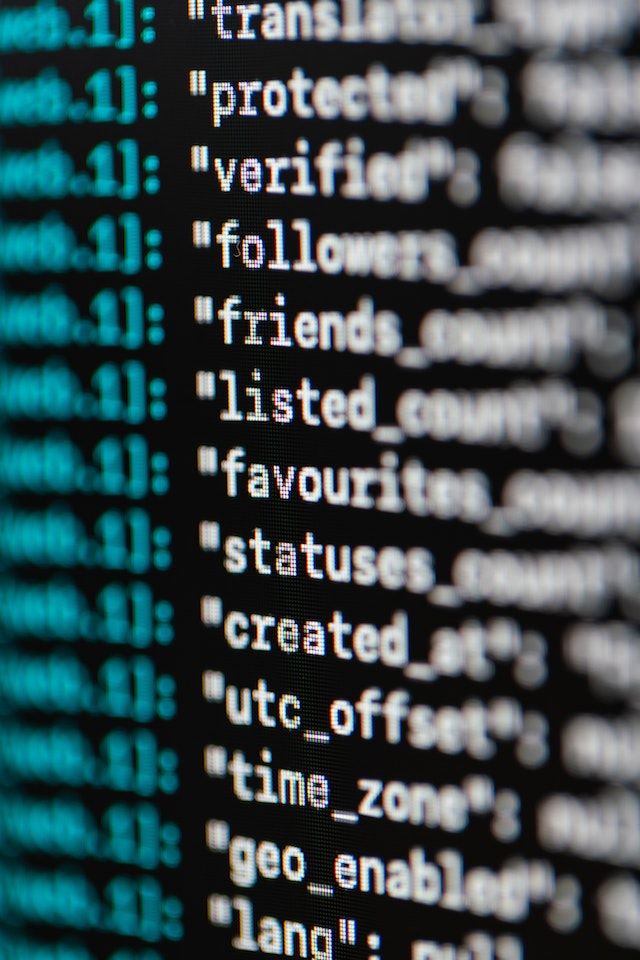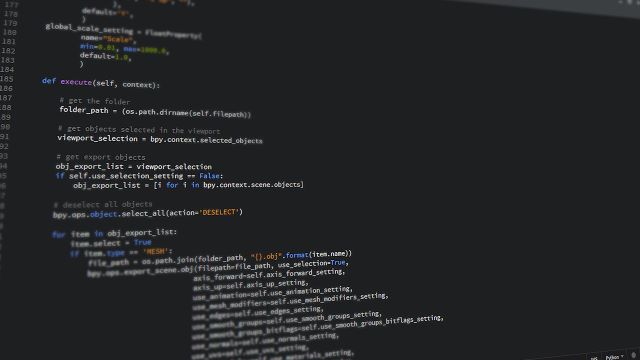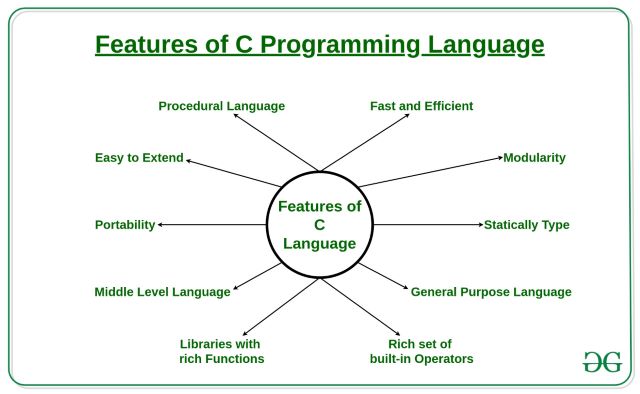Learning the C programming language
Welcome to the world of C programming. In this tutorial, we will be taking a journey through the basics, and, eventually, in further lessons, the more complex and advanced syntax and applied methods of programming with C language, & learning how to write our own programs and understanding how the language works. C is a powerful and versatile language that is used in a wide range of applications, from operating systems and embedded systems, to games and scientific simulations. The full course is available in my E-Book “A Complete Guide to Programming in C Language”, which is available for purchase in the publications section of this website
C has been around for over four decades, and it’s still widely used today. It’s known for its low-level access to memory and its ability to handle pointers, which makes it ideal for systems programming. But don’t let that fool you, C is also a great language for beginners. It is relatively simple to learn, and it provides a solid foundation for understanding more complex languages such as C++ and C#.
Throughout this onlne tutorial (which is an excerpt from a much more explanatory, detailed, and complete ebook, for those who feel they need to understand more than this tutorial contains), we will learn the basics of C programming, including data types, variables, control structures, and functions. We will also explore the more advanced features of the language, such as pointers and memory management. By the end of the book, you will have a solid understanding of the C language and be able to write your own programs.
So, let’s get started. The world of C programming is waiting for you.

C programming language uses a specific set of syntax, constants, variables, and other terms to create efficient programs.
- Syntax refers to the set of rules that dictate how C code should be written. For example, the use of curly braces to enclose code blocks and the use of semicolons to mark the end of a statement.
- Constants are values that do not change during the execution of a program. They are also known as literals. For example, the number 5 or the string “Hello, World!”.
- Variables are used to store data in a program. They have a specific data type, such as int for integers, float for decimal numbers, and char for characters. Variables can be assigned new values throughout the execution of a program.
- Data Types: There are several data types in C, like int (integer), float (decimal number), char (character), double, short, long etc.
- Operators: C provides a set of operators for performing operations on variables and constants, such as arithmetic operators (+,-,*,/,%), relational operators (==,!=,>,<,>=,<=) and logical operators (&&,||,!).
- Functions are blocks of code that can be called multiple times throughout a program. They can take parameters as input and return a value as output.
- Pointers: Pointers are variables that store memory addresses. They allow for low-level manipulation of memory and are used in advanced C programming.
- Control Structures: C uses control structures like if-else, while, do-while, for loop etc. to control the flow of the program.
By understanding and using these terms correctly, you will be able to write clear and efficient C code.
Here is a list of some of the common syntax used in C code:
- Curly braces {} to enclose code blocks, such as in functions, loops, and control structures.
- Semicolon ; to mark the end of a statement.
- Parentheses () to enclose function parameters, expressions, and control structures conditions.
- Brackets [] to access array elements and to define array size.
- Comma , to separate function parameters and elements in arrays and structs.
- Single and double quotes ” “” to define character and string constants
- to include the contents of a header file
- /* */ or // for commenting out a piece of code
- if,else,switch,case,default,break,continue,goto for control structures
- for, while, do-while for loops
- sizeof() for finding the size of a data type or variable
- return for returning a value from a function
- typedef for defining new data types
- . and -> for accessing structure members
- & and * for referencing and dereferencing pointers.
- ?: Ternary operator
- sizeof() for finding the size of a data type or variable.
- The & operator: used to reference the memory address of a variable.
- The * operator: used to dereference a pointer and access the value stored at its memory address.
- The -> operator: used to access the members of a structure through a pointer.
- The . operator: used to access the members of a structure directly.
- The ?: operator: Ternary operator used as a shorthand for an if-else statement.
- The sizeof() operator: used to find the size in bytes of a data type or variable.
- The *=,+=,-=,/=,%= operators: shorthand operators for performing operations and assignments in one step.
- The ++ and — operators: used to increment and decrement a variable by one, respectively.
- The &=,|=,^=,<<=,>>= operators: shorthand operators for performing bitwise operations and assignments in one step.
- The #define preprocessor directive: used to define constants and macros in C.
Here is a list of ten of the most commonly used types of commands using C code
Constants:
Constants, are fixed values that cannot be changed during the execution of a program. In C, constants are also known as literals. They can be of various types, such as integers, characters, strings, floating-point numbers, and more. Constants are used in C code to provide a fixed value for a variable or an expression, or to define an enumeration or a preprocessor macro.
There are several ways in which constants are used in C code:
- Integer literals: Integer literals are used to represent numerical values in C. They can be positive or negative and can be represented in decimal, octal, or hexadecimal form. Examples of integer literals include 5, -3, and 0xFF.
- Character literals: Character literals are used to represent single characters in C. They are enclosed in single quotes and can include any printable ASCII character. Examples of character literals include ‘a’, ‘Z’, and ‘0’.
- String literals: String literals are used to represent sequences of characters in C. They are enclosed in double quotes and can include any printable ASCII characters. Examples of string literals include “hello” and “world”.
- Floating-point literals: Floating-point literals are used to represent decimal numbers in C. They can include a decimal point and an exponent. Examples of floating-point literals include 3.14 and -2.0.
- Enumeration constants: Enumeration constants are used to define a set of named integer constants. They are defined using the keyword “enum” and can be used in place of integer literals. Examples of enumeration constants include enum { false, true };
- Octal and hexadecimal literals: Octal and hexadecimal literals are used to represent integer values in non-decimal form. Octal literals begin with a 0, and hexadecimal literals begin with 0x or 0X. Examples of octal and hexadecimal literals include 0xff and 0777.
- NULL pointer constant: The NULL pointer constant is used to represent a null pointer, which is a special value that indicates that a pointer does not point to a valid memory location. The NULL pointer constant is represented by the keyword “NULL”.
- Escape sequences: Escape sequences are used to represent special characters in C. They begin with a backslash and include characters such as ‘\t’ for a tab, ‘\r’ for a carriage return, ‘”‘ for a double quote, and ‘\’ for a backslash.
- Sizeof operator: The sizeof operator is used to find the size in bytes of a data type or variable. It is used to determine the memory requirements of a program.
- Preprocessor definitions: Preprocessor definitions are used to define constants and macros in C. They are defined using the “#define” preprocessor directive and can be used in place of variable or constant names. Examples of preprocessor definitions include #define PI 3.14
These are some of the many ways in which constants are used in C code, and each serves a specific purpose, providing a fixed value for a variable or expression, or providing a set of named integer constants.

Variables:
In C programming, variables are used to store data in a program. A variable is a named location in memory where a value can be stored and retrieved. Each variable has a specific data type, such as int for integers, float for decimal numbers, and char for characters. The value stored in a variable can be changed throughout the execution of a program, which is why they are called variables.
Here are some ways in which variables are used in C code:
- Integer variables: Integer variables are used to store whole numbers in C. They can be positive or negative and can be defined using the “int” data type. Examples of integer variables include int x;
- Character variables: Character variables are used to store single characters in C. They can be defined using the “char” data type. Examples of character variables include char c;
- Floating-point variables: Floating-point variables are used to store decimal numbers in C. They can be defined using the “float” data type. Examples of floating-point variables include float f;
- Pointer variables: Pointer variables are used to store memory addresses in C. They are defined using the “*” operator followed by a data type. Examples of pointer variables include int *ptr;
- Array variables: Array variables are used to store multiple values of the same data type in C. They are defined using the “[]” operator followed by a size. Examples of array variables include int arr[10];
- Struct variables: Struct variables are used to store multiple values of different data types in C. They are defined using the “struct” keyword followed by a name. Examples of struct variables include struct point p;
- Union variables: Union variables are used to store multiple values of different data types in C, but only one value can be stored at a time. They are defined using the “union” keyword followed by a name. Examples of union variables include union value v;
- Enumeration variables: Enumeration variables are used to store enumeration constants in C. They are defined using the “enum” keyword followed by a name and a list of enumeration constants. Examples of enumeration variables include enum color c;
- Function variables: Function variables are used to store function parameters in C. They are defined within the parentheses following the function name. Examples of function variables include void func(int x);
- Global and local variables: Global variables are defined outside of any function and can be accessed by any function in a program. Local variables are defined within a function and can only be accessed within that function.
In C programming, variables are used to store and manipulate data within a program. They are defined with specific data types, and their values can change during the execution of a program. Understanding the different types of variables, their uses, and how to define and manipulate them, is absolutely crucial, for writing efficient and effective C code. 
Data Types:
In C programming, data types are used to specify the type and size of the data that a variable can store. They determine the type of value that a variable can hold and the amount of memory space required to store it. C programming language supports several basic data types and user-defined data types.
Here are some of the basic data types used in C code:
- int (integer): int data type is used to store whole numbers. It can store both positive and negative numbers.
- float (decimal number): float data type is used to store decimal numbers. It can store numbers with a fractional part.
- char (character): char data type is used to store a single character. It can store any printable ASCII character.
- double: double data type is used to store large decimal numbers. It is similar to float but can store a larger range of values.
- short: short data type is used to store small integers. It uses less memory than int but can store a smaller range of values.
- long: long data type is used to store larger integers. It uses more memory than int but can store a larger range of values.
- void: void data type is used to specify that a function or variable does not return any value or does not accept any parameters.
- unsigned: unsigned data type is used to store only positive integers.
- signed: signed data type is used to store both positive and negative integers.
![]()
Operators:
In C programming, operators are used to perform operations on variables and constants. They are used to manipulate data and control the flow of a program. C programming language supports several types of operators, including arithmetic, relational, logical, bitwise, assignment, and more.
Here are some of the types of operators used in C code:
- Arithmetic operators: Arithmetic operators are used to perform mathematical operations such as addition (+), subtraction (-), multiplication (*), division (/), and modulus (%).
- Relational operators: Relational operators are used to compare values and check the relationship between them. They include equal to (==), not equal to (!=), greater than (>), less than (<), greater than or equal to (>=), and less than or equal to (<=).
- Logical operators: Logical operators are used to perform logical operations and check the relationship between multiple conditions. They include logical AND (&&), logical OR (||), and logical NOT (!).
- Bitwise operators: Bitwise operators are used to perform operations on the individual bits of a variable. They include bitwise AND (&), bitwise OR (|), bitwise XOR (^), bitwise NOT (~), left shift (<<), and right shift (>>).
- Assignment operators: Assignment operators are used to assign a value to a variable. They include the equal sign (=) and shorthand operators such as +=, -=, *=, /=, and %=.
- Increment and decrement operators: Increment and decrement operators are used to increment or decrement the value of a variable by 1. They include ++ and —

Functions:
In C programming, functions are blocks of code that can be reused and executed multiple times throughout a program. Functions are used to organize and structure the code, making it more readable and maintainable. Functions can take input in the form of parameters and can return output in the form of a return value.
Here are some ways in which functions are used in C code:
- Library functions: C programming language provides a set of standard library functions that can be called to perform common tasks such as input and output, memory management, and mathematical operations. Examples of library functions include printf(), scanf(), and sqrt().
- User-defined functions: In addition to library functions, developers can also create their own custom functions to perform specific tasks. User-defined functions can be created using the “function” keyword and can be called by name throughout the program.
- Function parameters: Functions can accept input in the form of parameters, which are passed to the function when it is called. These parameters can be of various data types and are used within the function to perform specific tasks.
- Return values: Functions can return output in the form of a return value. This value is returned to the calling code and can be used to store the result of the function or to make decisions in the code.
- Function calls: A function call is used to execute the code inside a function. The function call includes the function name, followed by the parameters passed to it, enclosed in parentheses.
By using functions, a programmer can break down a large program into smaller, manageable pieces of code, making it easier to understand, debug and maintain. Functions can be reused multiple times across the program and make it more organized, readable and efficient.
Pointers:
In C programming, pointers are a type of variable that store the memory addresses of other variables. They are used to manipulate the memory directly and can be used to create more efficient and powerful code. Pointers can be used to access the value stored at a memory address, as well as to dynamically allocate memory during runtime.
Here are some ways in which pointers are used in C code:
- Pointer variables: Pointers are defined using the “*” operator followed by a data type. For example, an integer pointer would be defined as int *ptr;
- Indirection operator: The indirection operator “*” is used to access the value stored at a memory address. For example, *ptr would return the value stored at the memory address stored in the pointer variable ptr.
- Address-of operator: The address-of operator “&” is used to obtain the memory address of a variable. For example, &x would return the memory address of the variable x.
- Pointer arithmetic: Pointers can be used to perform arithmetic operations such as addition and subtraction on memory addresses. For example, ptr + 1 would return the memory address of the next memory location.
- Dynamic memory allocation: Pointers can be used to dynamically allocate memory during runtime. The malloc() and calloc() functions can be used to allocate memory and return a pointer to the first byte of the allocated memory.
- Pointers and arrays: Pointers can be used to access elements of an array. The name of an array is a pointer to the first element of the array.
- Pointers and functions: Pointers can be used to pass variables to a function by reference, rather than by value. This allows the function to modify the original variable.
Pointers are an important concept in C programming, they allow the programmer to directly manipulate memory and create more efficient and powerful code. Understanding how to use pointers properly can be a bit difficult, but once mastered, the programmer can achieve much more than the basic C code capabilities.
What kind of things which can achieve much more than the the basic capabilities of C code, would a person who understands how to use Pointers (in unorthodox and intelligent ways), be able to implement?
A person who understands how to use pointers in unorthodox and intelligent ways, can achieve many things that go beyond the basic capabilities of C code. Here are a few examples:
- Dynamic memory management: Pointers can be used to dynamically allocate and deallocate memory during runtime, which allows for more efficient use of memory resources and eliminates the need for fixed-size arrays.
- Linked lists and other data structures: Pointers can be used to create complex data structures such as linked lists, trees, and graphs. These data structures are useful for tasks such as sorting and searching.
- Advanced data manipulation: Pointers can be used to manipulate memory directly, which allows for more efficient operations such as swapping values and sorting arrays.
- Advanced string handling: Pointers can be used to manipulate strings in a more efficient way, for example, by implementing custom string manipulation functions or by implementing a custom memory management for strings.
- Interfacing with C++ and other languages: Pointers can be used to interface with other languages such as C++ and assembly, which allows for more advanced functionality and better performance.
- Advanced file handling: Pointers can be used to read and write to files in a more efficient way, for example, by reading large blocks of data at once, or by reading and writing structs directly to a file.
- Pointers in multithreading: Pointers can be used to create multithreading, for example, by creating a separate thread for each pointer and using the pointers to communicate between the threads.
Overall, using pointers in unorthodox and intelligent ways can allow developers to achieve more advanced functionality, better performance, and more efficient use of memory resources.
Control Structures:
In C programming, control structures are used to control the flow of a program by allowing the developer to specify the order in which statements are executed. They are used to make decisions, perform repetitive tasks, and handle exceptions. Control structures include:
- Conditional statements: Conditional statements such as if-else and switch-case are used to make decisions based on the value of a variable or expression. They allow the program to take different actions based on different conditions.
- Loops: Loops such as for, while, and do-while are used to repeat a block of code multiple times. They are used to perform repetitive tasks and to iterate through data structures such as arrays and linked lists.
- Jump statements: Jump statements such as break, continue, and goto are used to change the flow of a program. They allow the program to jump to a different location in the code, such as breaking out of a loop or skipping to the next iteration.
- Exception handling: Exception handling is used to handle errors and unexpected situations that may occur during the execution of a program. C programming language provides try-catch and throw statement to handle exceptions.
- Recursion: Recursion is a technique where a function calls itself. This technique is used to solve problems that can be broken down into smaller sub-problems of the same type.
Control structures are an important aspect of C programming, they are used to control the flow of the program, to make decisions and execute blocks of code multiple times. They also allow handling errors and unexpected situations that may occur during the execution of a program. Understanding how to use control structures properly can help the developer to write efficient, readable and maintainable bug-free code.
I would like to mention that there are many syntaxes used for control structures in C programming language, but to name a few, the following are the most commonly used:
- if-else: The if-else syntax is used to make decisions based on the value of an expression. The code block inside the if statement is executed if the condition is true, otherwise, the code block inside the else statement is executed.
- while: The while syntax is used to repeatedly execute a code block as long as a specified condition is true.
- do-while: The do-while syntax is similar to the while syntax but with a slight difference. In do-while, the code block inside the loop is executed at least once, regardless of whether the condition is true or false.
- for: The for syntax is used for iterating through a set of values, such as an array or a range of numbers. It has a built-in counter that can be used to keep track of the current iteration.
- switch-case: The switch-case syntax is used to make decisions based on the value of a variable or expression. The code block inside the case statement that matches the value of the variable or expression is executed.
- break: The break statement is used to exit a loop or a switch statement.
- continue: The continue statement is used to skip the current iteration of a loop and move on to the next iteration.
- goto: The goto statement is used to jump to a different location in the code, identified by a label. It is used to change the flow of a program.
- return: The return statement is used to exit a function and return a value to the calling code.
- exit(): The exit() function is used to terminate a program. It is defined in the stdlib.h library and can be called to immediately stop the execution of a program.
This list is not a complete and exhaustive list, but includes many of the most commonly used syntax in C programming for comon tasks.
My E-Book, “A complete guide to programming in C Language” (Available in my E-Book Store), is an in-depth resource that covers all essential syntaxes, constants, variables, data types, operators, functions, pointers, and control structures used in C programming. It provides a comprehensive overview of the C language, including the basics of how to write code and the more advanced features of the language.
- The guide will include a detailed list of all syntaxes used in C code, along with explanations of how and when to use them. This includes operators, control structures, loops, and preprocessor directives.
- The guide will also cover constants and variables, explaining the different types of data that can be stored and how they are used in programs. It will provide information on data types, including int, float, char, double, and others, and the appropriate usage scenario for each.
- The guide will also explain the various operators used in C, including arithmetic, relational, and logical operators, and provide examples of their usage. Functions, pointers and control structures like if-else, while, do-while, for loops will also be explained in detail and how they affect the flow of a program.
- In addition to theoretical explanations, the guide will also include numerous examples and applied methods to help readers understand the concepts better. The guide will also include usage scenarios for each feature, to help readers understand how the different elements of the language can be used in real-world programming.
- Overall, this guide is an essential resource for anyone looking to learn C programming. It provides a thorough understanding of the language and its features, along with practical examples and usage scenarios to help readers master the language and become proficient programmers.


